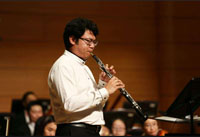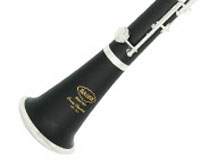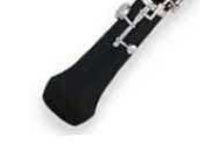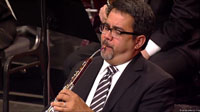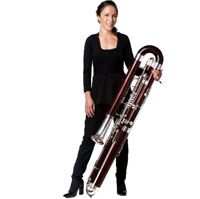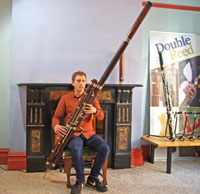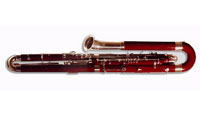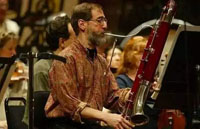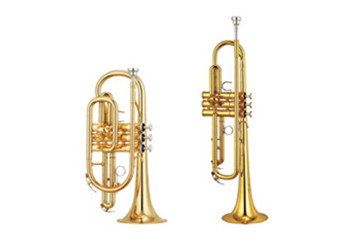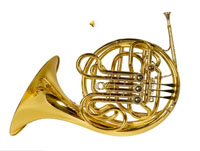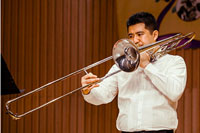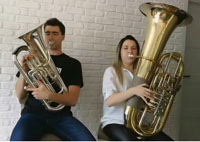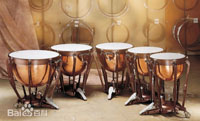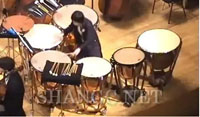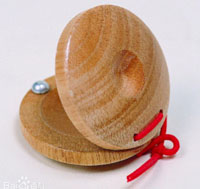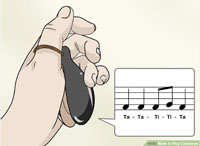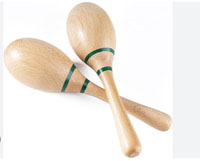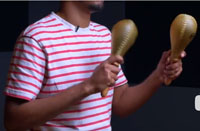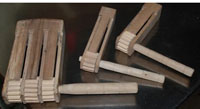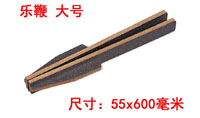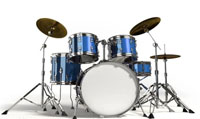Orchestra is a large music performance group, generally used to perform classical music or record soundtracks for movies or records. Large orchestras consist of more than 70 players, and some even have more than a hundred people. Medium-sized orchestras have 30-50 people, and small-sized orchestras generally have less than 30 people,it is also called a chamber orchestra. Some large orchestras are called symphony orchestras or philharmonic orchestras. Orchestras do not necessarily have all types of musicians, and they can work with independent musicians on an ad hoc basis if necessary.
The orchestra's instruments are composed of the following four groups of instruments.
1. String group: includes two types of musical instruments: one is "bowed string instruments", which make sounds with a bow, including violins, viola, cello, and double bass; the other is "plucked string instruments", which make sounds by plucking or popping them with fingers. , including harp, organ, piano, guitar, mandolin, banjo, etc.
2. Woodwind group: includes three types of instruments: 1. "Reedless instruments", including piccolo and transverse flute (also called flute); 2. "Clarinet", including recorder and bass clarinet. 3. "Oboe", including treble oboe, English horn, bassoon , Contrabassoon
3. Brass group: cornet (short trumpet), trumpet, French horn, trombone, tuba (bass horn).
4. Percussion group: timpani, bass drum, snare drum, cymbals, triangle, tambourine, bells, gongs, xylophone, glockenspiel, celesta, sleigh bells, castanets, maracas, ratchet, cowbell, cuckoo Flute, box bang, musical whip, small bell, etc.
|
|
|
|
Sound example  ( Here) |
|
|
|
|
Sound example  ( Here) |
|
|
|
|
Sound example  ( Here) |
|
|
|
|
Sound example  ( Here) |
|
|
|
|
Sound example  ( Here) |
|
|
|
|
Sound example  ( Here) |
|
|
|
|
Sound Sxample  ( Here) |
|
|
|
|
Sound example  ( Here) |
|
|
|
|
Sound example  ( Here) |
|
|
|
|
Sound example  ( Here) |
|
Attachment: The difference between clarinet and oboe |
Oboe and clarinet are two woodwind instruments with significant differences. They have their own characteristics in terms of structure, timbre, and playing skills.:
construction differences
1. Oboe: Made of a mixture of wood and metal, it mainly includes reeds, double reeds and the main body of the instrument. The double reed is the key sound-producing component, consisting of two thin reeds, with full keys and no sound holes. Vibrations are controlled through the player's mouth. Appearance relatively thick and short
2. Clarinet: Made of all wood, it mainly includes reeds, clarinet and the main body of the instrument. The single reed is the key sound-producing component. It is composed of a single thin reed and has both buttons and sound holes. The resonant size of the clarinet is larger than that of the oboe, which means the clarinet is larger. The shape of the mouth is also different, with the bell of the clarinet being larger than that of the oboe. The clarinet has 5 sections and the oboe has only 3 sections.
|
Pictured below: Clarinet mouthpiece |
Pictured below: Oboe mouthpiece |
|
|
timbre difference
1. Oboe: The oboe has a soft, sweet tone and rich expressive power. It has a wide range of sounds and can express a variety of musical styles from lyrical to dramatic.
2. Clarinet: The timbre of the clarinet is relatively bright and thick, with rich woodwind characteristics. It has a narrow range and is usually used to express deep and pathos musical emotions.
Differences in playing skills
1. Oboe: Playing the oboe requires strong oral control and skillful operation of the instrument body and reeds. Proper breathing technique and embouchure control are key to playing the oboe.
2. Clarinet: Clarinet playing also requires good oral control, but compared to the oboe, it pays more attention to finger skills. The player needs to use flexible fingers to operate the single reed to control the pitch and timbre
|
11 English Horn / Cor anglais ( 01, 02) |
|
|
Sound example  ( Here) |
|
12 Contrabassoon / double bassoon ( 01, 02) |
|
|
|
|
Sound example  ( Here) |
|
|
|
|
Sound example  ( Here) |
|
|
|
|
|
Sound example  ( Here) |
|
Attachment: The difference between trumpet and cornet |
|
The timbre is different. The trumpet is known as the king of high notes among brass instruments. Its timbre is high-pitched, loud and sharp, very appealing and expressive; the timbre of the cornet is relatively softer and smoother.
The structure is different. The conical part of the trumpet usually accounts for one-third of the tube length, while the conical part of the cornet accounts for one-half of the tube length; in the bell mouth part, the enlarged part of the cornet has a larger arc than the trumpet. This makes a big difference in the type of sound produced
The applications are different. The trumpet is often used in orchestras and military bands, but is rarely used in jazz bands; the cornet is often used in military bands and light music bands, especially in jazz bands, where it plays an important role.
In general, the trumpet tends to play high-pitched and rhythmic melodies, while the cornet is more suitable for playing soft, lyrical melodies. |
|
|
|
Sound example  ( Here) |
|
|
|
|
Sound example  ( Here) |
|
|
|
|
Sound example  ( Here) |
|
|
|
|
Sound exanple  ( Here) |
|
|
|
|
Sound Example  ( Here) |
|
|
|
|
Sound example  ( Here) |
|
|
|
|
|
Sound example  ( Here) |
|
22 Sand Hammer Percussion / Maracas
)
( 01, 02) |
|
|
Sound example  ( Here) |
|
23 Ratchet / Guiro / Cog Rattle / Scraper
) ( 01, 02) |
|
|
|
|
Sound example  ( Here) |
|
|
|
|
Sound example  ( Here) |
|
25 Whip / Slapstick ( 01, 02) |
|
|
Sound example  |
|
26 Jazz Drum kit / Jazz Drum set ( 01, 02 ) |
|
|
|
|
|




























